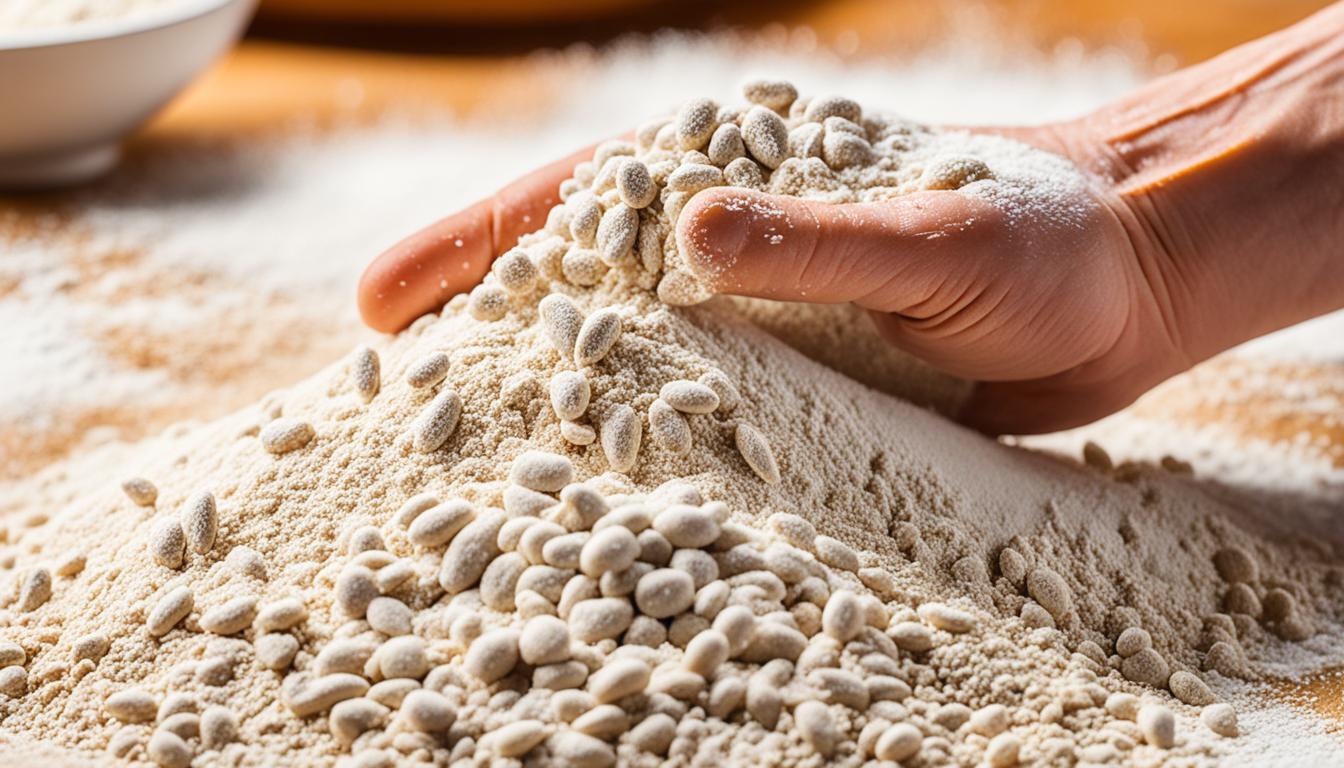Are you tired of your bread loaves turning out flat and lackluster? Do you struggle to find bread flour at your local grocery store or prefer not to use it? We’ve got a game-changing hack that can transform your baking experience and elevate your bread’s structure and texture. Introducing the vital wheat gluten bread flour hack – a simple trick that has taken the baking world by storm.
Imagine achieving lofty loaves with a satisfying chewiness, even without traditional bread flour. The secret lies in adding vital wheat gluten to your preferred flour, whether it’s all-purpose or another gluten-free alternative. But how does it work, and can it truly replace bread flour? Let’s dive into the science behind this innovative technique and uncover the tips and tricks to make it successful.
What is Vital Wheat Gluten and How Does it Work?
Vital wheat gluten is a key ingredient used in baking, particularly in bread-making. It is a dry, flour-like powder that is considered a “dough conditioner.” This powerhouse ingredient is made by extracting the starch from wheat flour, leaving behind a substance that is primarily composed of wheat proteins.
When vital wheat gluten is mixed with water, it forms a complex and elastic structure known as gluten. Gluten is responsible for the texture, structure, and rise of bread. It creates a network that traps and holds carbon dioxide produced by yeast during the fermentation process, resulting in a light and airy loaf.
By incorporating vital wheat gluten into your dough, you can increase the protein content, which leads to stronger gluten development and a more robust gluten network. This network provides the necessary structure for the dough to rise and creates a chewy texture in the finished bread.
How to Use Vital Wheat Gluten as a Substitute for Bread Flour
When it comes to baking, using vital wheat gluten as a substitute for bread flour can be a game-changer. This hack is particularly useful when you don’t have access to bread flour or if you’re looking to experiment with different flours in your recipes. By adding vital wheat gluten to lower-protein flours like all-purpose flour, you can increase the protein percentage and enhance the strength of your dough.
So, how do you use vital wheat gluten as a bread flour substitute? It’s simple. Begin by determining the protein percentage you want to achieve in your flour. For example, if your all-purpose flour has a protein content of 10%, you can add vital wheat gluten to increase it to around 11.5%, which is closer to that of bread flour.
The recommended ratio for using vital wheat gluten as a bread flour substitute is typically 1-3 tablespoons of vital wheat gluten per recipe or 1-1.5 teaspoons per cup of flour. This ratio will help you achieve the desired protein content without affecting the texture of your baked goods.
Important note: It’s crucial to avoid adding too much vital wheat gluten, as it can negatively impact the texture of your dough. Adding too much can result in a dense and overly chewy texture. Additionally, you may need to adjust the water content of your recipe as well, as vital wheat gluten can absorb more moisture than traditional flours.
It’s important to understand that while vital wheat gluten can add strength to your dough, it doesn’t fully replicate the characteristics of bread flour. The texture and baking properties of bread flour are unique and can’t be completely replicated by adding vital wheat gluten alone.
Adding vital wheat gluten as a substitute for bread flour can be a useful technique for home bakers looking to experiment and achieve better dough strength in their recipes. It provides a viable option when bread flour is unavailable or when you simply prefer to use different types of flour in your baking endeavors.
Testing the Vital Wheat Gluten Bread Flour Hack
Through multiple recipe tests, we have sought to evaluate the efficacy of using vital wheat gluten as a substitute for bread flour. In these comprehensive tests, we compared recipes using solely all-purpose flour to recipes incorporating a combination of all-purpose flour and vital wheat gluten. The results were enlightening.
Our findings demonstrated that the breads crafted with the addition of vital wheat gluten boasted a stronger gluten network. As a result, these loaves featured a more indulgent chewiness, accompanied by crusts with delightful texture and larger air pockets. However, it is important to note that while these enhanced attributes may elevate one’s baking endeavors, they may not necessarily guarantee an enhanced taste or texture in all recipes.
Using vital wheat gluten as a substitute for bread flour requires a degree of trial and error. Adjustments relating to water content and other variables may need to be made to achieve optimal outcomes. It is important to keep in mind that the success of this hack is highly dependent on the specific recipe and desired outcome. Nevertheless, when faced with the unavailability of bread flour or a desire to explore diverse flours in your baking, the vital wheat gluten hack can serve as a valuable option.
